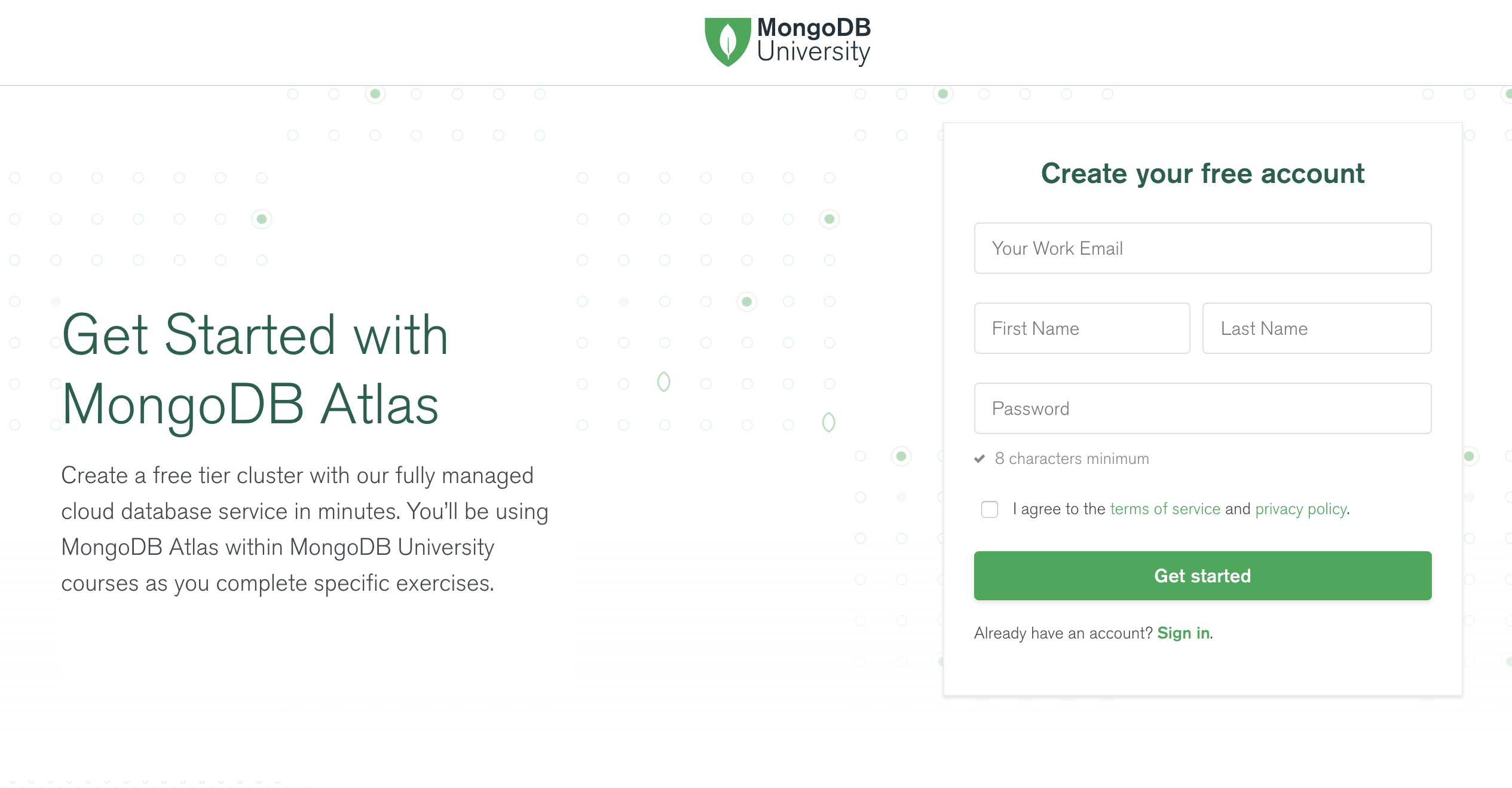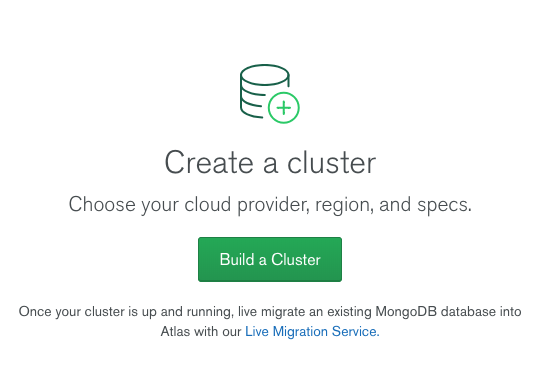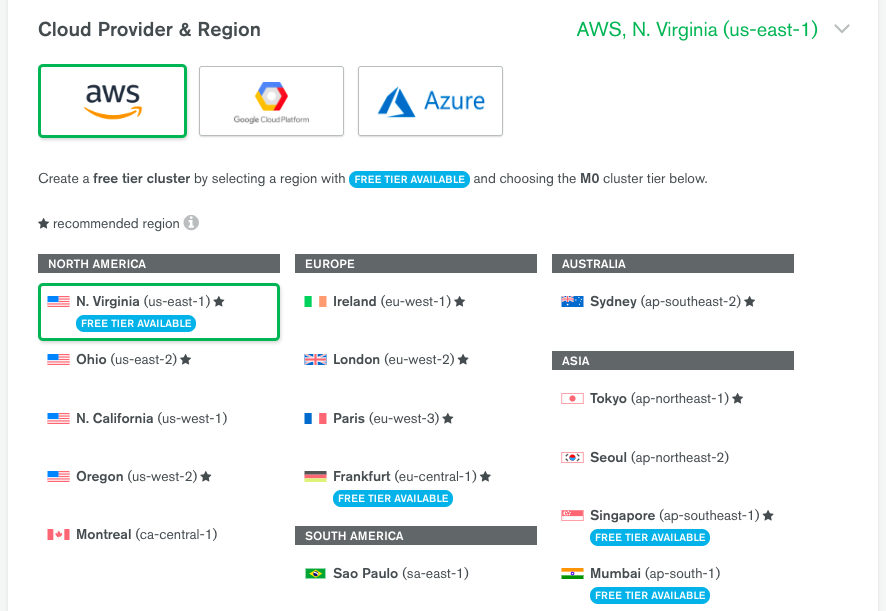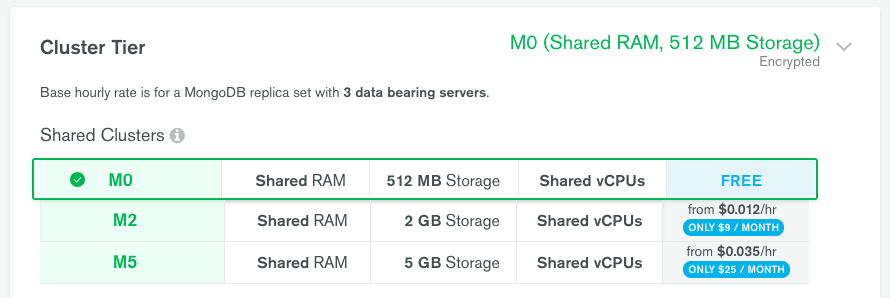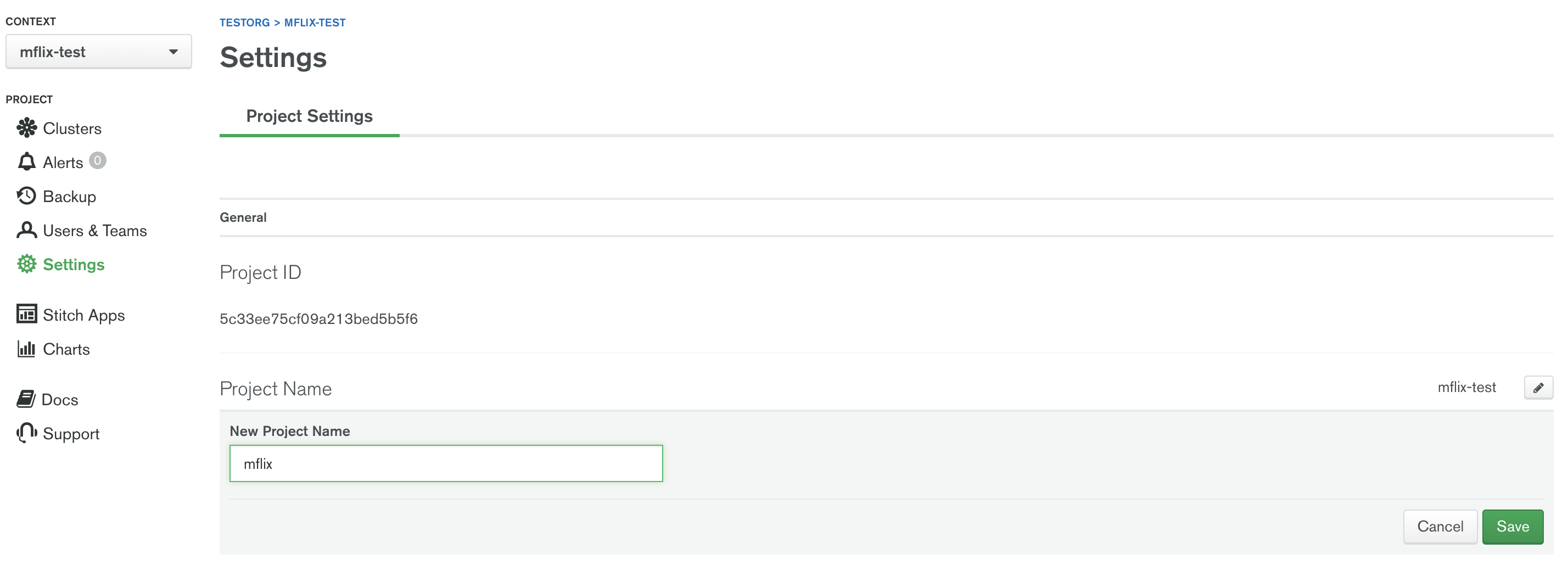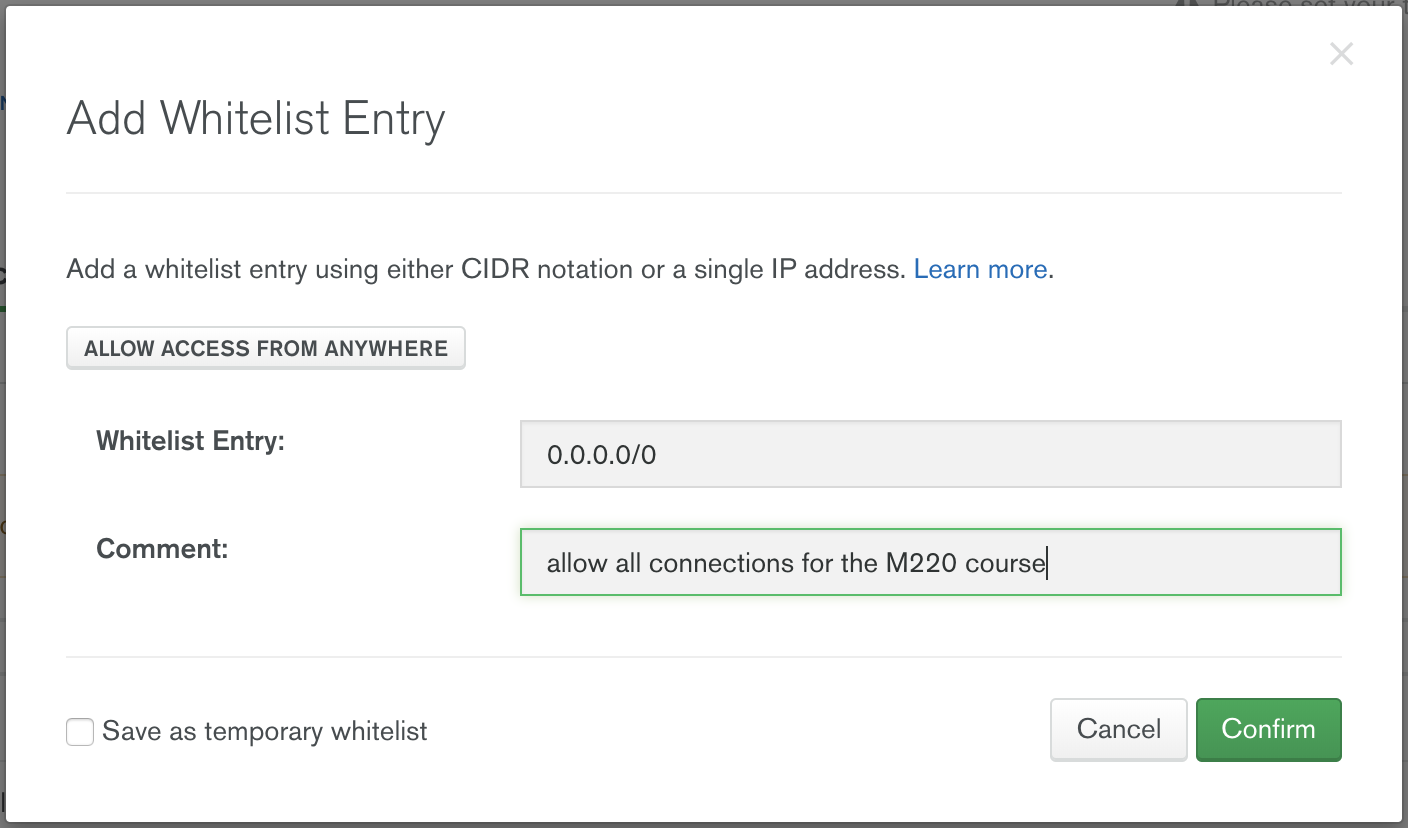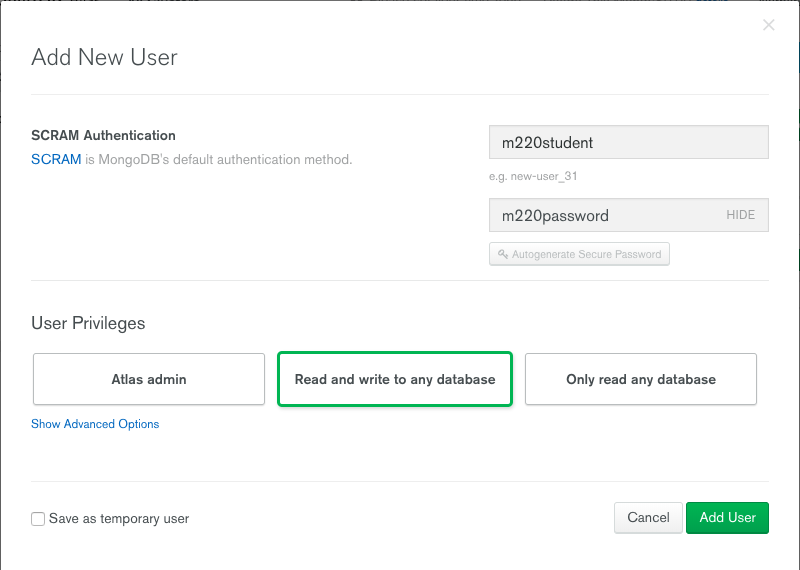This is a short guide on setting up the system and environment dependencies required for the MFlix application to run.
Downloading the mflix-js.zip handout may take a few minutes. Unzipping the file should create a new directory called mflix-js.
Most of your work will be implementing methods in the dao directory, which contains all database interfacing methods. The API will make calls to Data Access Objects (DAOs) that interact directly with MongoDB.
The unit tests in test will test these database access methods directly, without going through the API. The UI will run these methods in integration tests, and therefore requires the full application to be running.
The lesson handouts can be found in the test/lessons directory. These files
will look like <lesson-name>.spec.js, and can be run with npm test -t
<lesson-name>.
The API layer is fully implemented, as is the UI. The application is programmed to run on port 5000 by default - if you need to run on a port other than 5000, you can edit the dotenv_win (if on Windows) or the dotenv_unix file (if on Linux or Mac) in the root directory to modify the value of PORT.
Please do not modify the API layer in any way, under the mflix-js/src/api directory. This may result in the front-end application failing to validate some of the labs.
The dependencies for the MFlix application should be downloaded using the
npm command-line tool. You can get this tool by downloading Node.js. Make sure to choose the correct option for
your operating system.
Once the installation is complete, you may need to restart your computer before using the command line tools. You can test that it's installed by running the following command:
node -vThis should print out the version of node you currently have - we recommend
using version 10 or later, so this command should print something like
v10.x.
Once npm is installed, you can install the MFlix dependencies by running the
following command from the mflix-js directory:
npm installYou must run this from the top level of the project, so npm has access to
the package.json file where the dependencies are.
You may see warnings depending on your operating system from fsevents or Husky warning about git missing. These are informational only and do not impact the functionality of the application. You can safely ignore them.
It is recommended to connect MFlix with MongoDB Atlas, so you do not need to have a MongoDB server running on your host machine. The lectures and labs in this course will assume that you are using an Atlas cluster instead of a local instance.
That said, you are still required to have the MongoDB server installed, in order to be able to use two server tool dependencies:
mongorestore- A utility for importing binary data into MongoDB.
mongo- The MongoDB shell
To download these command line tools, please visit the MongoDB download center and choose the appropriate platform.
All of these tools are free to use. MongoDB Enterprise is also free to use for testing and evaluation purposes.
MFlix uses MongoDB to persist all of its data.
One of the easiest ways to get up and running with MongoDB is to use MongoDB Atlas, a hosted and fully-managed database solution.
If you have taken other MongoDB University courses like M001 or M121, you may already have an account - feel free to reuse that cluster for this course.
Note: Be advised that some of the UI aspects of Atlas may have changed since the inception of this README, therefore some of the screenshots in this file may be different from the actual Atlas UI interface.
If you already have a previous Atlas account created, perhaps because you've taken one of our other MongoDB university courses, you can repurpose it for this course.
Log-in to your Atlas account and create a new project named M220 by clicking on the Context dropdown menu:
After creating a new project, you need to create an mflix free tier cluster.
If you do not have an existing Atlas account, go ahead and create an Atlas Account by filling in the required fields:
Note: You will need to do this step even if you are reusing an Atlas account.
- After creating a new project, you will be prompted to create the first cluster in that project:
- Choose AWS as the cloud provider, in a Region that has the label Free Tier Available:
- Select Cluster Tier M0:
- Set Cluster Name to mflix and click Create Cluster. It may take 7-10 minutes to successfully create your Atlas cluster:
- Once you press Create Cluster, you will be redirected to the account dashboard. In this dashboard, make sure you set your project name to M220. Go to Settings menu item and change the project name from the default Project 0 to M220:
- Next, configure the security settings of this cluster, by enabling the IP Whitelist and MongoDB Users:
Update your IP Whitelist so that your app can talk to the cluster. Click the Security tab from the Clusters page. Then click IP Whitelist followed by Add IP Address. Finally, click Allow Access from Anywhere and click Confirm.
- Then create the application MongoDB database user required for this course:
- username: m220student
- password: m220password
You can create new users through Security -> Add New User.
Allow this user the privilege to Read and write to any database:
- When the user is created, and the cluster deployed, you can test the setup by connecting via the Mongo shell. You can find instructions to connect in the Connect Your Application section of the cluster dashboard:
Go to your cluster Overview -> Connect -> Connect Your Application.
Select the option corresponding to your local MongoDB version and copy the
mongo connection command.
The below example connects to Atlas as the user you created before, with username m220student and password m220password. You can run this command from your command line:
mongo "mongodb+srv://m220student:m220password@<YOUR_CLUSTER_URI>"By connecting to the server from your host machine, you have validated that the cluster is configured and reachable from your local workstation.
You may see the following message when you connect:
Error while trying to show server startup warnings: user is not allowed to do action [getLog] on [admin.]
This is a log message, not an error - feel free to ignore it.
The mongorestore command necessary to import the data is located below. Copy
the command and use an Atlas SRV string to import the data (including username
and password credentials).
Replace the SRV string below with your own:
# navigate to mflix-js directory
cd mflix-js
# import data into Atlas
mongorestore --drop --gzip --uri \
"mongodb+srv://m220student:m220password@<YOUR_CLUSTER_URI>" dataThe entire dataset contains almost 200,000 documents, so importing this data may take 5-10 minutes.
In order for the application to use Atlas, you will need a file called .env to contain the connection information. In the mflix-js directory you can find two files, dotenv_unix (for Unix users) and dotenv_win (for Windows users).
Open the file for your chosen operating system and enter your Atlas SRV connection string as directed in the comment. This is the information the driver will use to connect. Make sure not to wrap your Atlas SRV connection between quotes:
MFLIX_DB_URI = mongodb+srv://...
It's highly suggested you also change the SECRET_KEY to some very long, very random string. While this application is only meant for local use during this course, software has a strange habit of living a long time.
When you've edited the file, rename it to .env with the following command:
mv dotenv_unix .env # on Unix
ren dotenv_win .env # on WindowsNote: Once you rename this file to .env, it will no longer be visible in Finder or File Explorer. However, it will be visible from Command Prompt or Terminal, so if you need to edit it again, you can open it from there:
vi .env # on Unix
notepad .env # on WindowsIn the mflix-js directory, run the following commands:
# install MFlix dependencies
npm install
# start the MFlix application
npm startThis will start the application. You can then access the MFlix application at http://localhost:5000/.
To run the unit tests for this course, you will use Jest. Jest has been included in this
project's dependencies, so npm install should install everything you need.
Each course lab contains a module of unit tests that you can call individually
with npm test. For example, to run the test connection-pooling.test.js,
run the command:
npm test -t connection-poolingEach ticket will contain the exact command to run that ticket's specific unit tests. You can run these commands from anywhere in the mflix-js project.

